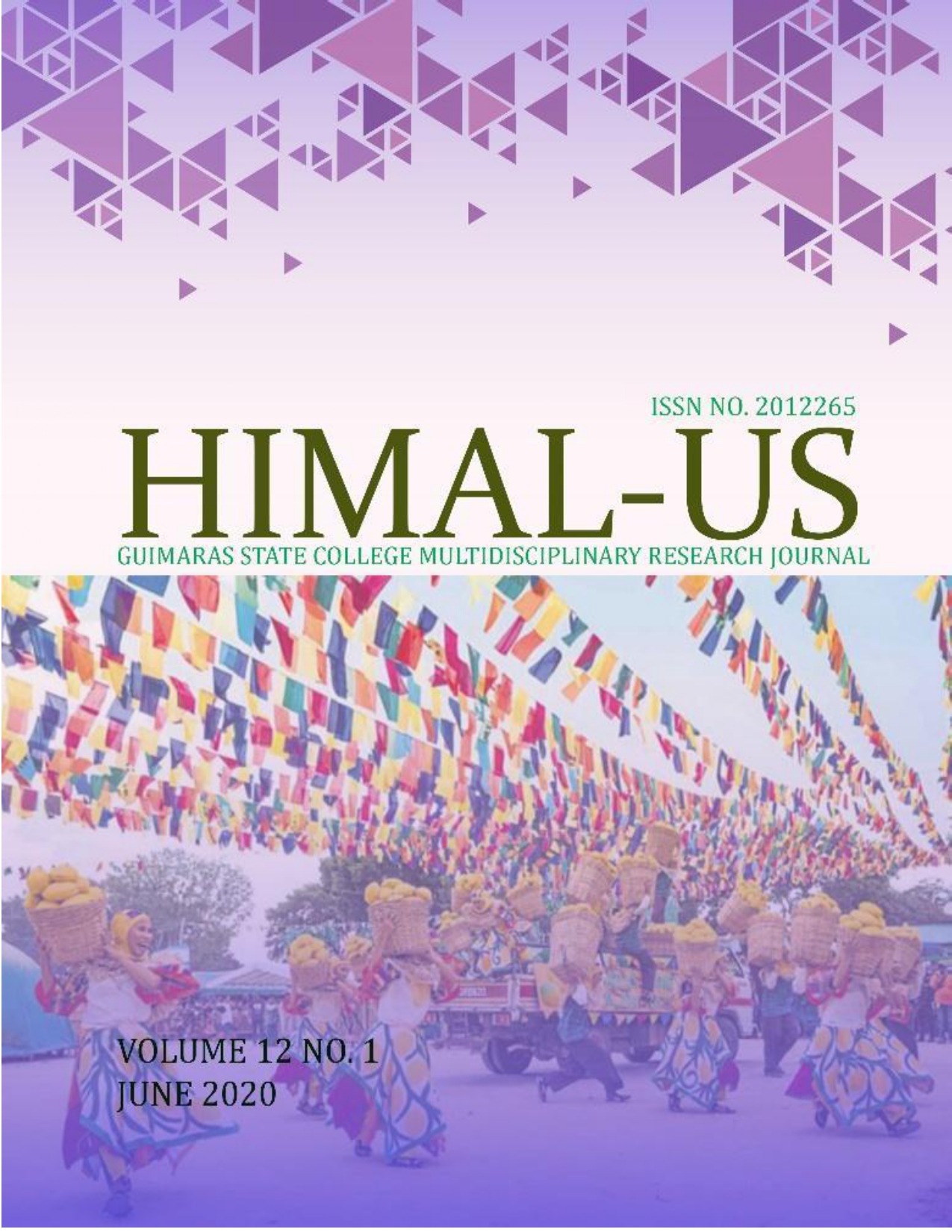Growth and Yield Performance of Upland Rice Varieties applied with Guimaras Bokashi at Different levels
Keywords:
Growth, yield, performance, upland rice, varieties, Guimaras, bokashi,Abstract
The study was conducted in Sitio Progreso, Barangay Constancia, San Lorenzo, Guimaras from June to October 2019. The split-plot design with two (2) factors replicated three (3) times was used, wherein Mainplot served as the main plot bearing the upland rice varieties such as V1-black rice and V2-red rice, and Subplot as the subplot contains the levels of bokashi as the treatments applied such as A–Positive Control (Commercial Organic Fertilizer), B–5 tons of bokashi/ha, C–10 tons of bokashi/ha, D–15 tons of bokashi/ha, and E–Negative Control (Synthetic Fertilizer). Representative plant samples per treatment were taken for the data gathering using the following parameters: in growth performance are plant height (cm), number of tillers per plant, number of leaves, and for the yield performance are the number of panicles per tiller, number of grains per panicle, yield per treatment (kg), 1000 seed weight (g), and biomass (kg). As to the growth performance of Variety 1, there were significant differences in the no. of tillers and leaves, while Variety 2 was on plant height. On the yield performance, a significant effect was observed in the weight of 1000 seeds (grams) of Variety. There is a significant difference in the number of tillers applied with treatment C (10 tons of Bokashi/ ha). On the yield performance, treatment B (5 tons of Bokashi/ha) has a significant effect on the no. of panicle per tiller. Rice varieties and bokashi application interacted only on the number of tillers on the 30th day after transplanting, as supported by a significant difference.





